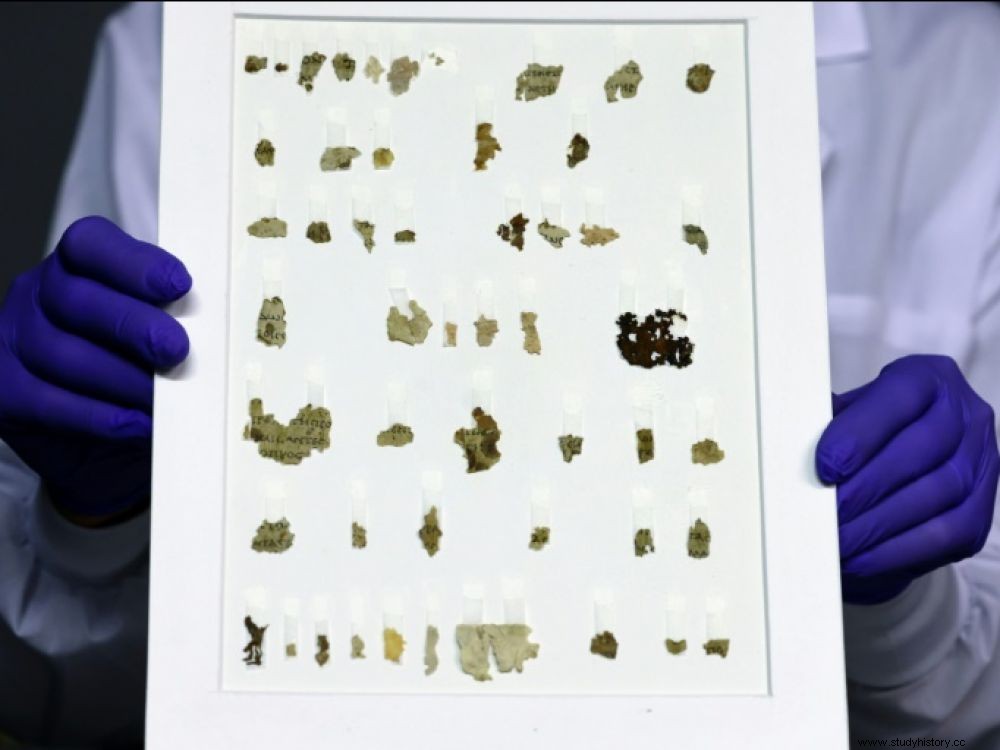Israel on Tuesday (March 16, 2021) unveiled fragments of a 2,000-year-old biblical scroll discovered in the Judean Desert, calling the discovery "historic" and one of the most important since that of the Dead Sea Scrolls, uncovered. between 1947 and 1956.

Tanya Bitler, curator of the Israel Antiquities Authority (IAA), shows fragments of a 2,000-year-old biblical scroll recently discovered in the Judean Desert. Photo taken on March 16, 2021.
The fragments of the manuscript, written in Greek, made it possible, according to Israeli researchers, to reconstruct passages from the books of Zacharias and Nahum, taken from the book of the twelve minor prophets of the Bible (the shortest book of the Old Testament ). They were found in a cave on the side of a cliff in the Nahal Hever nature reserve, as part of a nationwide operation to combat heritage looting.
The "Cavern of Horrors"
The first fragments were discovered by Bedouins in the 1950s and 1960s in this "cavern of horrors ", so called for the many skeletons that were found there, explains Oren Ableman, of the AIA. To carry out this archaeological operation which extended to the part of the Judean Desert located in the West Bank, Palestinian territory occupied by Israel since 1967, the AIA has provided archaeologists with drones and mountain equipment, including ropes for abseiling.
The skeleton of a mummified child and the oldest woven basket in the world
In addition to the pieces of parchment, the operation brought to light rare coins dating back to the Jewish revolt of Bar Kokhba against the Romans (132-136 AD), but also a child's skeleton 6,000-year-old mummified body draped in fabric, as well as a 10,500-year-old woven basket, probably the oldest in the world, the AIA estimates. The basket has been remarkably preserved thanks to the very dry environment of the desert, explains archaeologist Chaïm Cohen to AFP.
Since the discovery of the Dead Sea Scrolls more than sixty years ago in the caves of Qumran, the rocky cavities of the Judean Desert have become the targets of antiquities looters. These 900 manuscripts are considered one of the most important archaeological finds as they include religious texts in Hebrew, Aramaic and Greek, and the oldest known version of the Old Testament.
However, this new discovery "could make it possible to deepen the history of the Greek translation of the Bible ", according to Yosef Garfinkel, director of the Archaeological Institute of the Hebrew University of Jerusalem. For Israel Hasson, director of the AIA which exhibits these objects in its laboratory located in the Israel Museum in Jerusalem, the initiative launched in 2017 aims to "save these rare and important heritage assets from the clutches of thieves ".Israeli archaeologists believe the caves served as a refuge for Jews around the time of the Romans' destruction of the Second Temple in Jerusalem in 70 AD, and during the Jewish Bar Kokhba revolt against the Romans some 65 years later.
